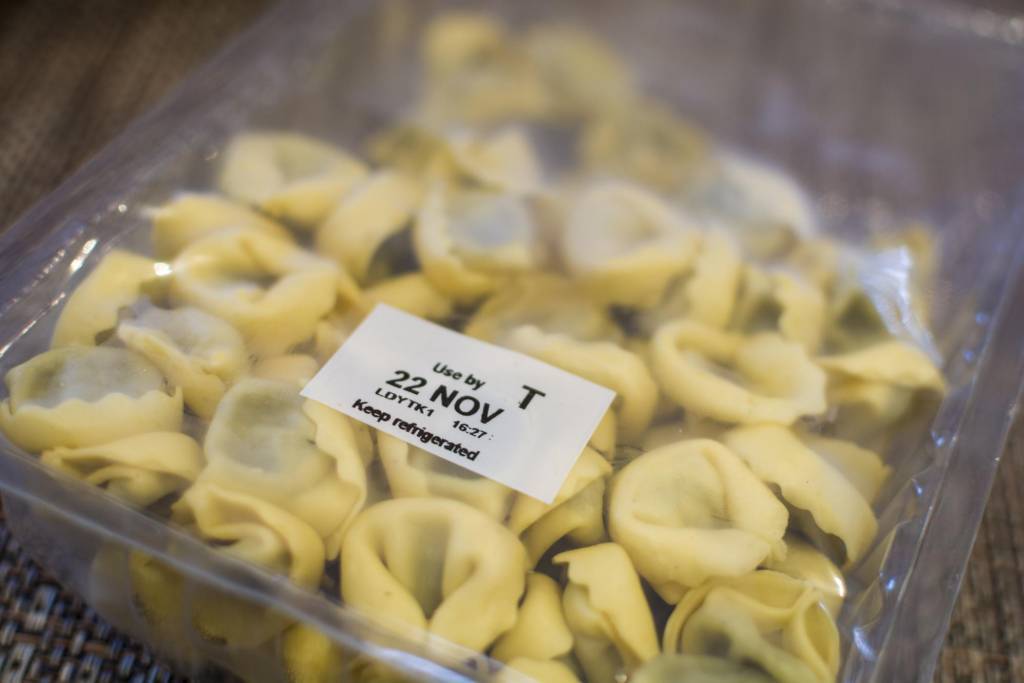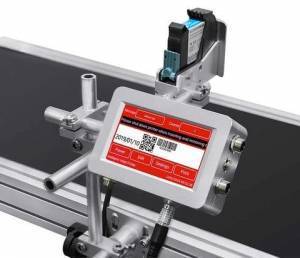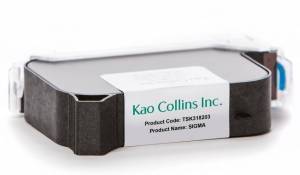
Continuous inkjet technology (CIJ) and, increasingly, thermal inkjet systems (TIJ) are the printing industry’s go-to digital solutions for coding and marking of packaging for food, pharmaceuticals, and other consumer products.
The market for product coding using industrial inkjet printing is projected to reach about $9.6 billion by 2023, a substantial 6.6% CAGR, according to Credence Research.
CIJ printing systems have traditionally been preferred for printing barcodes, expiration dates, serialization, and other markings. Commercial and industrial printers now see TIJ systems as a realistic and cost-effective alternative for both porous and non-porous substrates.
See Inks for Barcoding and Marking
Get Started
New inks for thermal technology now print on films, flexible packaging, cardboard, and corrugated surfaces with a glossy finish.
The value proposition for CIJ made sense at one time. Today, CIJ holds few advantages over HP Specialty Printing Systems and Funai, two leading thermal inkjet technologies. In fact, there are several reasons that TIJ now holds the edge over CIJ.
TIJ Has Lower Total Cost of Ownership
A closer look at TIJ printing systems as coding solutions shows they can go head-to-head with CIJ printing, especially when comparing the total cost of ownership. Technical advancements for TIJ systems put them ahead of the former prize-fighter, CIJ.
CIJ OEMs may offer printing systems at bargain prices, knowing they can recover the equipment cost with ongoing maintenance and ink.
Despite saving money upfront with discounted systems, the initial capital investment needed for CIJ systems still exceeds that of TIJ printing technology.
When calculating the total cost of ownership and ROI of TIJ vs. CIJ systems, you should place a value on the following comparison factors:
Comparing TIJ and CIJ
Speed Tests
In the beginning, CIJ printing left TIJ systems in the dust. Then, technology changed. Today, thermal systems are much more competitive when comparing speed.
Consider your needs. Maybe your production line doesn’t need a Formula 1 racing engine.
For example, a production line running at 100 meters per minute doesn’t need a printing system that runs at 200 meters per minute.
Advantage: CIJ–but not by much.
Image Quality and Resolution
The faster-operating speed of CIJ printers sacrifices image quality. Because companies rely on coding for product tracking in the supply chain, image quality matters. Thermal inkjet systems create 600 dpi imaging, which is enough to ensure quality barcodes.
If dot characters for expiration dates and other coding meet your threshold for acceptable quality, CIJ likely offers a reliable solution.
The inherent superior image quality of TIJ offers more printing opportunities.
Advantage: TIJ–unless quality doesn’t matter.
Consumables
We partner with OEMs.
The attraction of CIJ printing is the savings on ink through recapturing. Ink is one part of the cost component of CIJ printing. Solvent inks evaporate quickly, and the base solution requires a replenishing solution be added to recaptured ink to maintain quality and viscosity. That adds to the overall cost of CIJ ink consumables.
Enclosed thermal inkjet cartridges prevent evaporation. No additional fluids are needed.
Advantage: TIJ
Ink and Substrate Versatility
Today, thermal inkjet printing systems offer more flexibility for printing companies.
TIJ Works for More Substrates
 At one time, TIJ printing was limited to porous substrates such as non-glossy paper and cardboard. Now inks from manufacturers like Kao Collins solve the problem of printing on difficult substrates. The Kao Collins Sigma solvent ink prints on non-porous surfaces such as glossy paper, some metals, glass, flexible films, and ceramics.
At one time, TIJ printing was limited to porous substrates such as non-glossy paper and cardboard. Now inks from manufacturers like Kao Collins solve the problem of printing on difficult substrates. The Kao Collins Sigma solvent ink prints on non-porous surfaces such as glossy paper, some metals, glass, flexible films, and ceramics.
An excellent application for Swiss-compliant SIGMA solvent ink is for printing on cardboard with a glossy surface.
The ink not only prints on more substrates, but it also has a decap time of 12 hours.
Advantage: TIJ
Changing Inks and Colors Faster for TIJ
TIJ makes printing changeovers faster and cleaner because the ink cartridge is also the printhead. As a result, changing color or changing ink formulations to print on different substrates is as simple as swapping a cartridge. That saves valuable production time for industrial printers.
CIJ systems require flushing when changing inks. That’s a waste of time.
Advantage: TIJ
Printer Maintenance and Reliability

TIJ printing starts faster, is less complicated and changing colors is simple.
CIJ Printing Equipment is Complicated
What initially made CIJ printing appealing to the inkjet industry was the way it recaptured ink along with its speed.
However, the engineering that makes all that work in CIJ systems requires significantly more routine cleaning and annual maintenance than TIJ systems.
Maintenance stops production and adds to the annual operating cost of the CIJ system.
In comparison, the cartridge-based printheads in TIJ systems require much less service.
A fresh TIJ cartridge can be quickly swapped to keep the printing line running, which allows more time for cleaning and servicing the removed cartridge.
CIJ Takes Longer to Start-Up
CIJ printing systems need time to warm up and shut down. That slows production for printing companies. By comparison, thermal inkjet systems can start and stop almost instantly, offering the convenience of intermittent operation or easy changes.
Advantage: TIJ
Ink Throw Distance
There’s no question that continuous inkjet systems offer the advantage for ink throw distance (referring to the distance from the printhead to the substrate surface). The high velocity of CIJ ink droplets makes the long throw distance possible.
Today, ink throw distance for CIJ and TIJ systems is much more comparable. CIJ printers may have a throw distance of up to 50 mm, although the average is closer to 10 mm. TIJ printers perform best at about 5 mm.
Funai’s newest TIJ technology is designed to fire up to 10 mm using NEXXO solvent ink. This is a significant increase in TIJ throw distance capability and begins to bridge the gap. A 10-12 mm throw distance now allows TIJ to mark dates, lot numbers, and data matrix barcodes onto recessed food package lids, the bottom of aluminum cans, and many other applications requiring that little bit of extra distance needed.
Advantage: Toss-up
Operating Skills Required
For the same reason that CIJ printers require more maintenance, the system also requires operators with higher skills.
There are many moving parts on continuous inkjet systems. Having skilled operators is a cost that must be factored into the total cost of operating CIJ printing systems.
There is also a higher risk to CIJ systems if operators don’t have the skill and training needed to troubleshoot problems successfully. Overlooking any issues with a CIJ printer can be costly.
TIJ systems are more intuitive, with more straightforward user guides and less operator training required.
Advantage: TIJ
Environmental Impact and Sustainability
When it comes to the ecological impact of inkjet printing operations, TIJ systems significantly outperform CIJ systems.
The basic engineering of CIJ systems makes their use of solvent inks an environmental hazard. Solvent inks with high volatile organic compounds (VOCs) are exposed to the open air during printing, which increases air pollution and health risks for employees.

Kao Collins uses factory-new HP cartridges.
Also, not all of the solvent ink used in CIJ systems is recaptured. Considerable amounts typically fall on printing equipment or the shop floor, which makes it necessary to use additional solvents and other materials for cleaning.
Self-contained TIJ ink cartridges deliver only the ink necessary for printing, significantly reducing environmental exposure to VOCs to one-tenth of CIJ inks.
Solvent-based inks with lower VOCs do even more to protect employees and the environment.
Solvent ink cartridges also avoid the risk of accidental spillage.
As a longtime HP partner, Kao Collins manufactures standard and custom HP inks for HP Specialty Printing Systems using new HP ink cartridges. Kao Collins also produces Funai thermal technology inks using newly-manufactured Funai cartridges.
Beyond reducing the environmental hazards of high VOC solvent inks, TIJ printing uses significantly less power – up to 80% less – compared to CIJ technology.
As governments enforce increasingly stringent environmental regulations, and the consumer demand for sustainability keeps growing, major brands are leaning more on their supply chains to improve their environmental impact.
Advantage: TIJ
Comparing the Costs of CIJ and TIJ Printing
 Adding variables to calculate the cost per 1,000 prints is the only way to determine whether CIJ or TIJ printing systems have a lower cost of ownership.
Adding variables to calculate the cost per 1,000 prints is the only way to determine whether CIJ or TIJ printing systems have a lower cost of ownership.
Environmental costs and benefits of each printing system may be more challenging to calculate, but now there are new formulas to consider when evaluating the financial impact.
The actual cost of ownership of TIJ is better, or at least even with CIJ. Another factor to consider is the opportunity cost of using CIJ printing systems that do not offer the flexibility and lower environmental impact of thermal inkjet printing.
Contact Kao Collins for custom ink formulations, including color matching and white-label inks for OEMs incorporating HP and Funai thermal inkjet technology.
Frequently Asked Questions
How does thermal inkjet printing work?
Thermal inkjet printers use electricity to heat the ink, which vaporizes to form a bubble that ejects from the nozzle and onto the substrate. The printhead is part of the ink cartridge.
What is CIJ printing?
The acronym for continuous inkjet, which is one of two broad types of inkjet technology. The other being drop-on-demand (DOD). Inkjet ink in CIJ systems is pumped from a tank to the printhead, which uses an electrical charge to direct the ink to the printing surface or deflect it for collection and reuse.
What are solvent-based inks?
In the world of inkjet printers, the term solvent is used to mean any ink that is not made with a water base. Solvent inks use a carrier made of various petroleum-based fluids that evaporate quickly. They can print on a wide variety of non-porous substrates without coatings.
What is eco-solvent inkjet ink?
Also called light or mild solvent, eco-solvent inkjet ink uses refined mineral oil as the base solution to hold the colorant.
What solvents are in solvent inkjet inks
Solvent inkjet inks are made of an oil-based carrier fluid. The common solvents present in the inks are aliphatic and aromatic hydrocarbons, C2-C4 alcohols and acetates, a variety of glycol ethers, and glycol ether acetates, isophorone, diacetone alcohol, and cyclohexanone. The solvent solution bites into the substrate and deposits the colorant.
Can industrial Thermal Inkjet Printers (TIJ) print on curved surfaces?
Advanced TIJ printheads with increased throw distance make it possible to print on curved or recessed surfaces. The technology is most often used for printing 2D codes and other marking and coding information on beverage cans, glass jars and plastic bottles using solvent inks.






